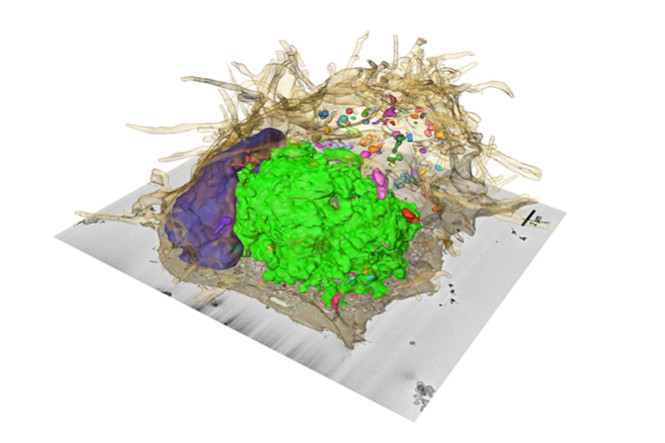Enterovirus genome replication occurs at virus-induced structures derived from cellular membranes and lipids. However, the origin of these replication organelles (ROs) remained uncertain. Ultrastructural evidence of the membrane donor was lacking, suggesting that the sites of its transition into ROs are rare or fleeting. To overcome this challenge, we combined in this study live-cell imaging and serial block-face scanning electron microscopy of whole cells to capture emerging enterovirus ROs. Our data provide direct evidence that enteroviruses use ER then Golgi membranes to initiate the formation or replication organelles, demonstrating the remarkable flexibility with which enteroviruses usurp cellular membranes. We also detected a close physical association between viral replication organelles and lipid droplets, which suggest the existence of contact sites for lipid transfer to facilitate RO proliferation and viral replication.
Charlotte E. Melia, Christopher J. Peddie, Anja W. M. de Jong, Eric J. Snijder, Lucy M. Collinson, Abraham J. Koster, Hilde M. van der Schaar, Frank J. M. van Kuppeveld, Montserrat Bárcena. “Origins of enterovirus replication organelles established by whole-cell electron microscopy” mBio 10(3): e00951-19.
